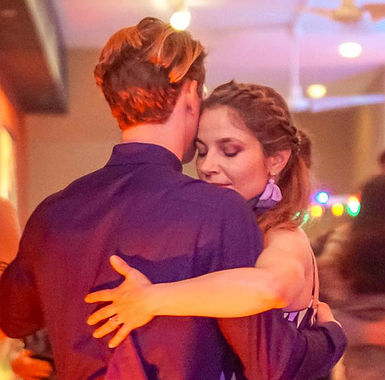If you are a current tango dancer looking for something different,
OR
If you have been tempted by the idea of learning to tango but one or more of the below apply to you:
- you are intrigued, yet intimidated by close embrace dancing
- you think you have two left feet
- the image of tango in the media is not your thing
- you don’t subscribe to binary leader/follower roles
Then…read on. Because………..
There is Another Way To Tango!

After more than 120 years of evolution, Argentine Tango is not a single dance anymore, but an umbrella term for many different styles. Many factors contribute to the birth and evolution of each style, including but not limited to:
- Style of embrace: open vs close – and everything in between
- Dance roles: gender-based vs fluid – and everything in between
- Music: traditional vs alternative – and everything in between
- Movement: figure-based vs improvised – and everything in between
- Social scene: dancing for socializing (often to meet potential partners) vs dancing for the sake of dancing – and everything in between
If you think “gee, it looks like there are almost as many styles of AT as there are AT dancers!” you’d be exactly right! And that’s the beauty of AT: there is something for everyone. Many people find their favorite style and stick to it; others move between styles as their preferences and life conditions change.
What then, is Nuevo Milonguero?
It’s just another way to tango! One of the many styles out there, which evolved out of the desire of some dancers to have their pie and eat it too: keep some of the traditional aspects of Argentine Tango (such as music and embrace) while stretching the limits of others. Below are some of its characteristics – some of these are unique to NM, most are not – but the particular combination of these characteristics makes the style unique.

- Total improvisation: movement is produced in real-time, based on the availability of space, musical interpretation and communication between partners. There are no figures (not even crosses, no ochos, no molinetes) – the emphasis is on mutual creativity and musical expression through relaxed communication with the partner
- Embrace Symmetry: full chest contact and equal distance between partners’ shoulders on both sides. Arms are only for embracing – not a conduit of information. There is no lean or shared axis and each partner can move freely within the embrace
- Role symmetry: dancers’ contribution is not limited by role or gender. Instead of “lead” and “follow”, dancing is seen as a conversation
- Music: traditional tangos from the “Golden Age” (1930s to early 1950s)
- Social dance etiquette: rules around floor navigation, dance invitations, and dance movements are adopted in order to create a fun and safe experience for everyone on and around the dance floor
Examples of Nuevo Milonguero dancing
Here are examples of couples whose dancing falls within the Nuevo Milonguero parameters. ***Please note that the dancers themselves may not label their style as Nuevo Milonguero (or as anything else for that matter).
